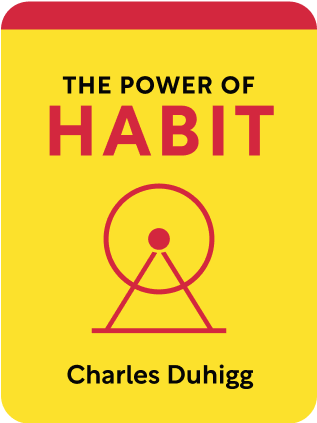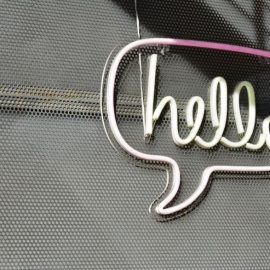

This article is an excerpt from the Shortform book guide to "The Power of Habit" by Charles Duhigg. Shortform has the world's best summaries and analyses of books you should be reading.
Like this article? Sign up for a free trial here .
What is the cue routine reward system? How do companies use our natural habit psychology to sell and market goods?
The cue routine reward system is how we respond to stimulation, and is part of how we form habits. Companies know this and they use our natural habit-forming tendencies to get us to create buying habits.
Read more about the cue routine reward system and how companies explot it.
Cue Routine Reward System
When you consume commercial products like groceries and music, you have habits, and those habits are predictable. (What a surprise.) People have favorite types of food and genres of music and regularly consume them. Again, the value of habits is conservation of mental energy – you don’t have to think hard about what what groceries to buy every trip or which radio station to listen to everyday. They use to cue routine reward system to force you to form habits, and take advantage of your existing habits.
Supermarkets are well designed to play psychological tricks based on your habits:
- Healthy, fresh food is put near the entrance of the store. The theory is that if you buy healthy food at the beginning of your shopping trip, you’ll be able to justify buying Oreos placed at the end (additionally, you’ve likely already depleted your willpower by this point after passing by loads of delicious looking food). This makes you spend more overall, and over time you develop a habit of loading up your cart with a full range of goods.
- Most people turn to the right after entering a store, so higher margin items are placed to the right.
People’s habits do suddenly change, and most often after major life events. Even though your personal habits have changed, they change in a predictable way. For example, if you’re expecting a baby, you’re likely to suddenly start buying vitamins and unscented lotion. This is one example fo the cue routine reward system.
Retailers track all your buying behavior through your credit cards and rewards cards. They can then detect your buying patterns and send you customized newsletters with deals unique to you, to get you back into the store. For instance, if Target thinks you’re likely to be in your third trimester of pregnancy, it’ll send you discounts on diapers and baby clothes. This will get you into the store and you’re likely to buy food and housewares along the way.
However, this can’t be done too obviously. Because buying pregnancy items is new to you, it contradicts your previous habits, and pointing it out is especially salient. It’d be creepy to get a coupon book full of baby formula coupons when you haven’t even announced that you’re pregnant.
So retailers have figured out that these new customized deals need to be sandwiched in between familiar items, like dish soap and detergent. Then it doesn’t look like you’re being explicitly targeted, but you notice the customized deals anyway.
This relates to the lesson from Chapter 3 – to adopt new habits, keep the same cue and the same reward, but change the routine. By sandwiching a new routine (baby formula) in between familiar cues (normal coupons), companies can inspire new habits using the cue routine reward system.
(Shortform note: there are clear connections these ideas and how today’s top companies like Facebook and Netflix build unshakeable habits of using their services.)
Example: Listening Habits in Pop Music
In popular music, there’s a running joke that the top songs all sound the same. For example, many songs follow a familiar 4 chord progression.
People crave familiarity, even if they consciously deny liking these songs. We subconsciously enjoy patterns so they ease the load on our cognition. For audio, patterns help us distinguish signal from the noise. In a busy intersection with hundreds of different noises happening at once, we can still pay attention to a conversation. Patterns in music work similarly.
In 2003, hip-hop group Outkast created a song called “Hey Ya!”. The studio executives felt it was catchy, fresh, and had the potential to be a big hit. But they noticed that listeners actively switched to a different station when it came on the radio. The theory – it sounded too dissimilar from other top 40 songs. People’s listening habits couldn’t immediately make sense of Hey Ya.
To ease the transition, DJs sandwiched the song in between popular form-fitting songs by people like Maroon 5 and Justin Timberlake. This made Hey Ya sound relatively more familiar than if it were sandwiched between unfamiliar songs. As people listened to the song over and over again, their habits shifted, and they began to crave Hey Ya as a new, adjusted habit.
Most companies use the cue routine reward system to help form habits and to get us to act on our habits.

———End of Preview———
Like what you just read? Read the rest of the world's best book summary and analysis of Charles Duhigg's "The Power of Habit" at Shortform .
Here's what you'll find in our full The Power of Habit summary :
- The 3 steps to change your habits
- Why habits are at the root of success in football
- How social movements are just an expansion of habits from individuals to communities






